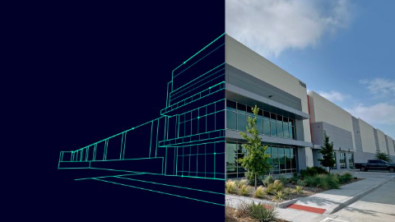Rising Above the Limits of Semiconductor Design with 3D ICs

Manhattan has always been a place that rises above limitations.
It goes way back. As the twentieth century approached, Manhattan found itself running out of building space. It was by far the most densely populated of New York City’s 5 boroughs, so engineers and planners had to come up with a new solution. They decided to build upwards – and the skyscraper was born!
The city’s first true skyscraper was the 11-story Tower Building, but soon the demand for new office space to support the expanding workforce soared even higher during the 1920s economic boom, culminating in the iconic Empire State Building at 1250 feet (about 381 m) and 102 stories tall. The Manhattan skyline was forever changed.
Today, like the engineers of Manhattan, semiconductor engineers find themselves searching for new ways to push the limits of what is possible to expand capacity. As the demand surges for faster, more powerful semiconductor devices, they too have looked to building upwards, stacking layer upon layer of circuitry on top of one another in the form of 3D ICs. With 3D ICs, design and engineering teams can stack different types of ICs to achieve far higher levels of system performance than is possible in conventional approaches. Like Manhattan, there is no turning back; but there are challenges ahead.
A Higher Level of Challenges. Stacking circuitry higher and higher is not as simple as it might appear. It changes the whole packaging equation. And it creates complex new challenges that engineers must overcome to design and build successful 3D ICs.
Thermal Management. As layers of circuitry are stacked on top of one another, the heat generated can become trapped, leading to escalating temperatures and a potential thermal breakdown. Engineers need to fully analyze the thermal interaction between different components to design the chip to effectively dissipate heat to prevent overheating and ensure reliability.
Interconnection Issues. The interconnections between the different layers of a 3D IC are critically important. They must be able to bend and flex to accommodate the multidimensional stacked structure, while maintaining secure contact. Inadequate or faulty connections can create issues with signal integrity, which may introduce noise interference or even signal loss.
Manufacturing Mandatories. Fabricating a 3D IC is a complex process that requires precise alignment and controlled environments. Misalignment or contamination during the manufacturing process can result in serious defects in the final 3D IC product and its performance.
Testing Techniques. Testing a 3D IC can be far more difficult than testing a conventional chip, as the stacked structure takes complexity to a whole new level. Engineers must be equipped to develop and access advanced testing techniques and methods to ensure that the chip is functioning correctly. You can read more about 3D IC testing techniques in this informative 3D IC Testing White Paper.
Balancing the Cost. 3D ICs are inherently more expensive to manufacture than traditional chips due to the complexity of the process and the precision it demands. Engineers must be able to find ways to balance the added benefits of a 3D IC with the additional costs to achieve economic viability.
So how will semiconductor engineers surmount these difficult issues? By using a combination of innovative technologies, tools, and techniques. For example, engineers are using advanced fabrication techniques and equipment, such as extreme ultraviolet lithography and vacuum-sealed cleanroom environments, to ensure precise alignment and achieve complete control of the 3D IC manufacturing process. They must also develop specialized testing techniques and methods to ensure the quality and reliability of the finished product. And since every 3D IC design is unique, there are many other new insights and exciting possibilities yet to be discovered in this journey.
It is important to keep in mind that the development of 3D ICs represents a significant advance in the field of semiconductors, enabling the creation of devices that are faster, more powerful, and more efficient than ever before possible. As with any innovative technology, the challenges conquered by semiconductor engineers in developing 3D ICs are a testament to the ingenuity and determination of the semiconductor industry.
Just as the Manhattan skyscrapers pushed the limits of what was possible and transformed the New York City skyline, 3D ICs will revolutionize the semiconductor landscape with devices that are faster, more powerful, and more efficient than ever. And just as the engineers of Manhattan faced challenges and overcame them, the engineers of today’s semiconductor industry face their own unique challenges and so must persevere in their efforts to build upwards.
The sky’s the limit!
For more 3D IC information, visit eda.sw.siemens.com/en-US/ic-packaging/3d-ic-design/3d-ic-resources/


